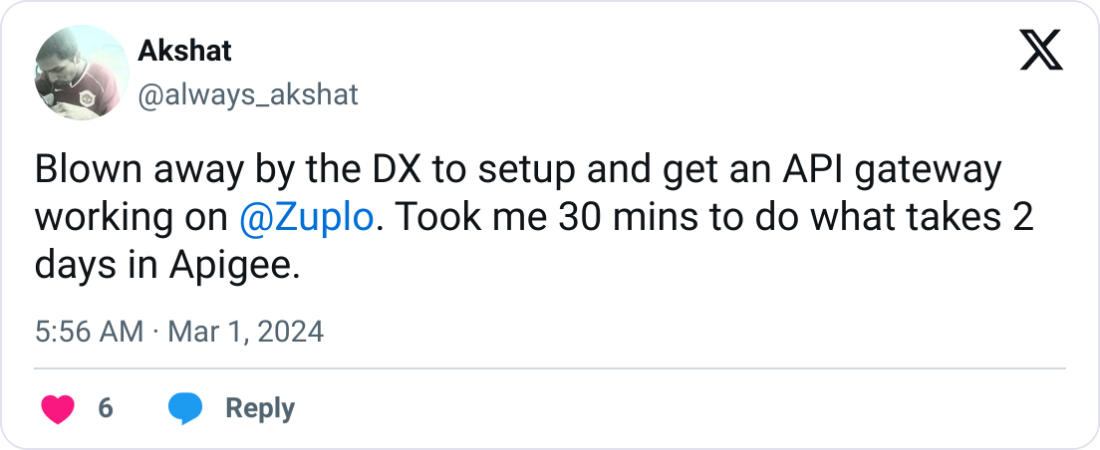Your API is only as good as the portal that showcases it. A killer API portal serves as the command center where developers discover, understand, and implement your APIs. The most successful API programs recognize that their portal serves as the front door to their entire developer experience.
Think of your API portal as a digital product in its own right. It needs to provide instant value through comprehensive documentation, interactive testing tools, well-designed SDKs, streamlined authentication processes, and vibrant community resources. When done right, developers champion your API throughout their organizations.
Companies with exceptional developer portals have higher adoption rates and create entire ecosystems around their APIs that drive innovation and revenue. Whether you're launching your first API or revamping an existing portal, creating a developer-friendly experience is critical to your API's success. Let's dive into how to build a portal that transforms curious visitors into committed API users.
- The Secret Ingredients of Stellar API Portals
- Building Blocks: Essential Components for Portal Success
- Show Me the Money: The Business Case for Great Portals
- Navigation Nirvana: Creating Intuitive Information Architecture
- Interactive Documentation That Developers Actually Love
- Authentication That Doesn't Make Developers Curse
- Sandbox Environments: Risk-Free API Experimentation
- Community Connections: Beyond Documentation
- Planning Your Portal: Strategy Before Code
- Choosing the Right Tech: Platform Selection Guide
- Launching with Impact: Portal Promotion Strategies
- Future-Proofing: Keeping Your Portal Relevant
- Elevating Your API Strategy with a Developer-First Portal
The Secret Ingredients of Stellar API Portals#
The best developer portals dominate with comprehensive documentation, quick-start guides, API explorers, multiple language support, thriving communities, and actionable analytics. What's the secret sauce? Reducing that "Time-to-First-Call" (TTFC) metric. Companies like Twilio crush it with "Quickstart" guides that get developers from "what's this API?" to "holy crap, it works!" in record time.
Remember, your portal isn't just for hardcore engineers. Truly effective portals need to serve everyone from citizen developers to business analysts. The broader your audience, the bigger your API adoption.
Building Blocks: Essential Components for Portal Success#
Developer experience (DX) isn't just a nice-to-have—it's the difference between an API that thrives and one that dies. The stats don't lie: organizations that nail DX see dramatically higher API adoption rates and usage. Your API's success depends on enhanced developer productivity—how quickly developers can go from curiosity to implementation without wanting to throw their laptops out the window.
Intuitive Navigation#
Nothing kills developer momentum faster than a maze of poorly organized documentation. Your portal should make finding information as easy as finding pizza at 2 AM. This means logical hierarchies, breadcrumbs that actually work, and consistent layouts that match how developers think. The best portals use fixed top navigation with crystal-clear categories—no treasure hunting required.
Comprehensive Documentation#
Documentation is the heart and soul of your portal. Great documentation doesn’t just tell developers what the API does—it shows exactly how to implement it in actual applications.
Interactive Elements#
Static documentation is so 2010. Today's developers expect to test your API directly in the browser before writing a single line of code. For instance, tools showcasing features like Zuplo Portal's logging and analytics massively enhance the developer experience.
SDK Support and Code Samples#
Want to make developers fall in love with your API? Give them copy-paste-ready code that actually works. Offering SDKs and code snippets in multiple languages means developers can implement your API in minutes rather than deciphering your documentation like it's ancient hieroglyphics.
When you combine these elements into one killer portal, the results speak for themselves. A well-designed API portal can cut onboarding time by up to 60% compared to traditional approaches.
Show Me the Money: The Business Case for Great Portals#
Let's talk money—because that's what this is really about. Knowing how to create developer-friendly API portals isn't just a nice gesture—it's a strategic business investment with serious ROI.
Reducing Support Costs and Onboarding Time#
Want to slash your support ticket volume? Create documentation that doesn't suck. According to a study by Moesif, companies with quality developer portals see up to a 50% drop in support tickets. That's not just less developer frustration—that's serious cost savings for your support team.
Increasing API Adoption and Usage#
Here's a shocker: developers use APIs that are easy to understand and implement. The easier you make it for developers to get started with your API, the more likely they are to actually use it. Fiserv's developer portal proves this by putting real-world use cases front and center.
Navigation Nirvana: Creating Intuitive Information Architecture#

Ever tried finding a needle in a documentation haystack? That's exactly what developers face with poorly organized API portals. Creating a logical information structure isn't just about aesthetics—it's about respecting developers' time.
Information Hierarchy Principles#
Structure your documentation the way developers actually use your API. Start with the fundamentals and gradually introduce complexity. Stripe crushes this with their crystal-clear navigation: Getting started guides that actually get you started Core resources and objects that make sense API references organized by function, not arbitrary categories SDK documentation by language so developers can find their preferred flavor
Optimizing Search Functionality#
Developers live and die by search, which means a powerful search feature isn't a nice-to-have; it's essential. Make your search work like developers expect with full-text capabilities, type-ahead suggestions, filters, and result highlighting.
The most effective API portal search features include:
- Code-specific indexing that understands programming languages
- Context-aware results that prioritize based on user history
- Typo tolerance that understands developer terminology
- Filtering by content type, language, or API version
- Highlighted search terms in results for quick scanning
Progressive Disclosure Techniques#
Complex APIs have complex documentation—but that doesn't mean you need to overwhelm users. Use progressive disclosure to keep things manageable with collapsible sections, tabbed interfaces for language-specific examples, and context-sensitive help.
Interactive Documentation That Developers Actually Love#
Let's face it—static documentation is boring as hell. OpenAPI (fka Swagger) integration transforms your lifeless docs into an interactive playground where developers can experiment with your API right in their browser. The most effective implementations don't just show your API—they let developers experience it with "Try it now" buttons, code generators, and interactive request builders.
To make your documentation truly interactive:
- Ensure your OpenAPI spec is comprehensive and accurate
- Use modern, Open Source tools like Zudoku to render interactive elements and autogenerate a test console
- Include authentication flows directly in the documentation interface (this is often done through API gateway integrations, like Zuplo API keys in Zudoku's API reference page)
- Provide pre-populated examples with working values
These interactive elements dramatically reduce the "time to first hello world"—that critical moment when a developer goes from skeptical to successful.
Authentication That Doesn't Make Developers Curse#
Let's be honest—authentication is where most developers start cursing at your API. The difference between good and great API portals often comes down to how painlessly you handle auth.

Over 10,000 developers trust Zuplo to secure, document, and monetize their APIs
Learn MoreSimplified API Key Management#
For basic authentication scenarios, self-service is king with one-click API key generation, clear visibility into permissions, and simple rotation options. GitHub's developer portal nails this with personal access tokens that are scoped to specific permissions and can be revoked with a single click. A well-planned developer portal setup can simplify these processes.
OAuth Implementation Best Practices#
For more complex scenarios, OAuth is the way to go—but it doesn't have to be a nightmare. Provide clear documentation of authorization scopes, simplified redirect URI configuration, and support for standard flows.
Role-Based Access Control#
For enterprise contexts, RBAC provides the control teams need with predefined role templates, custom role creation, and team-based access that supports collaboration without security compromises.
The best authentication isn't the one with the most security features—it's the one developers can implement correctly the first time.
Sandbox Environments: Risk-Free API Experimentation#
Nobody wants to test API integrations in production. That's like practicing juggling with live grenades. Sandbox environments are critical for letting developers explore your API without fear.
When building sandbox environments, focus on these must-have elements:
- Realistic simulation—Your sandbox should behave just like production, minus the real-world consequences. PayPal nails this with test accounts that have various balances and permissions.
- Comprehensive response simulation—Your sandbox needs to return the full range of responses—success, errors, edge cases, and everything in between.
- Environment switching—Make it dead simple for developers to move between sandbox and production with different base URLs, API keys, or SDK configurations.
- Reset capabilities—Give developers an easy way to return their sandbox to a clean state for consistent testing.
A robust sandbox environment dramatically lowers the barrier to adoption and increases the quality of implementations.
Community Connections: Beyond Documentation#

Let's be real—even the best documentation can't answer every question. That's why integrating community and support directly into your API portal isn't just helpful—it's essential for developer success.
Mapbox absolutely crushes this by embedding community forums right alongside their technical documentation. This brilliant approach means developers don't have to choose between official info and community wisdom—they get both in context.
A well-structured knowledge base is your secret weapon against support ticket overload. Organize content into clear categories like "Getting Started," "Troubleshooting," and "Advanced Use Cases" so developers can quickly find relevant information. Additionally, integrating API monitoring tools helps in proactively identifying issues.
Issue tracking systems create the feedback loops that drive your API's evolution by collecting structured bug reports, prioritizing improvements, and communicating progress transparently.
Planning Your Portal: Strategy Before Code#
Before we dive into technical details, let's get something straight: your API portal isn't just documentation—it's a product that deserves strategic thinking. Too many companies treat their portals as an afterthought, then wonder why adoption rates remain stubbornly low.
Identifying Key Stakeholders#
Your portal serves multiple masters, and you need to know who they are:
- Internal developers who need clear docs to understand the API they're building
- External partners looking for secure, reliable API access
- Product managers trying to drive API adoption and strategy
- Support teams who'll be flooded with tickets if your docs suck
- Operations staff responsible for keeping the portal running
Stakeholder Analysis Process#
Simply knowing who your stakeholders are isn't enough—you need to understand their specific needs, pain points, and success criteria. Conduct a thorough stakeholder analysis by:
- Scheduling dedicated interview sessions with representative users
- Creating personas that capture different developer archetypes
- Mapping the journey each persona takes through your documentation
- Identifying critical moments in each journey where users might struggle
- Prioritizing features based on stakeholder impact and business value
Gathering Requirements#
Once you know your stakeholders, it's time to get specific about what they need through structured interviews, surveys, workshops, and competitor analysis.
The most effective requirement gathering processes include:
- Usability testing of existing documentation (or competitors')
- Card sorting exercises to understand mental models
- Job-to-be-done workshops that identify what developers need to accomplish
- Competitive analyses that identify industry best practices
- Analytics reviews that reveal how current documentation is being used
Technical Stack Considerations#
Your technology choices should align with both requirements and what your team can actually support. Considering the hosted API gateway advantages can inform your strategy significantly.
Key decisions include:
- Content management systems: Do you need a specialized API portal solution, or can your existing CMS handle it?
- Documentation formats: OpenAPI/Swagger, GraphQL, or custom documentation approaches?
- Authentication: Can you leverage existing identity providers, or do you need something new?
- Hosting environment: Cloud, on-premises, or hybrid solutions based on your security requirements
Build vs. Buy Decision Framework#
Evaluate based on current capabilities, time constraints, budget realities, customization needs, and long-term ownership. Create a weighted decision matrix that scores each option against these criteria to avoid making a six-figure mistake based on gut feeling alone.
Choosing the Right Tech: Platform Selection Guide#
Choosing the right tech stack for your API portal can make or break your developer experience. Let's cut through the marketing hype and look at what actually works.
Portal Platform Options#
You've got two main paths—commercial platforms that do most of the heavy lifting or open-source solutions that offer more flexibility:
- Zuplo Developer Portal—Powered by the Zudoku project, Zuplo autogenerates a a full developer portal with auto-syncing API reference docs, integrated authentication, self-service key management and usage analytics, and API monetization.
- Apigee by Google Cloud—Offers a customizable drupal-powered portal with enterprise-grade features
- Mintlify—Documentation platform that powers many AI and API platforms
Open-Source and Community Solutions:
- Zudoku—Excellent for OpenAPI-based portals with support for Markdown/MDX pages, and fully customizable through a plugin system. Consider Zudoku an Open Source alternative to Mintlify.
- Redoc—Renders beautiful, responsive API documentation from OpenAPI specs. Some features are paid-only, requiring a Redocly subscription.
- Scalar—Open source API docs tool that powers various developer portals like Supabase's
Most organizations face a choice between speed and control. Commercial solutions get you moving quickly but may limit flexibility, while open-source and custom options offer more freedom at the cost of higher maintenance responsibility.
Launching with Impact: Portal Promotion Strategies#
You've built an amazing API portal—now how do you get developers to actually use it? A strategic launch can make the difference between immediate adoption and crickets chirping.
Internal Launch Planning#
Before going public, make sure your house is in order with comprehensive QA testing, documentation verification, user journey testing, and internal training for support teams.
External Launch and Developer Outreach#
Consider a phased rollout, create dedicated landing pages, develop custom messaging for different developer segments, and host interactive launch webinars or live coding sessions.
Measuring Launch Success#
Track developer registrations, documentation page views, API key generation rates, first API call completion rates, support ticket volume, and community forum activity to evaluate performance.
A strategic launch doesn't just drop your portal into the world with a blog post and a prayer. It actively engages developers through channels they already use and creates momentum that carries forward.
Future-Proofing: Keeping Your Portal Relevant#
The API landscape moves fast, and your portal needs to keep pace. Forward-thinking organizations don't just build for today's needs—they anticipate tomorrow's expectations.
Embracing Emerging Technologies#
The most innovative companies are already integrating AI capabilities with coding assistants, intelligent chatbots, and automated debugging features.
Personalization and Customization#
The future of API portals is hyper-personalized with different experiences for junior developers, experienced engineers, and various stakeholders.
Building Community for Sustainability#
The most forward-thinking API programs recognize that community is key to long-term success with dedicated developer advocates, recognition programs, and advisory boards.
By focusing on these forward-looking elements, you'll create a portal that not only serves developers today but continues to evolve with changing needs and technologies. The most successful API programs don't just react to change—they anticipate and embrace it, ensuring their developer portals remain relevant and valuable in an ever-changing landscape.
Elevating Your API Strategy with a Developer-First Portal#
Creating a developer-friendly API portal isn't just about documentation—it's about building a comprehensive experience that drives adoption, reduces support costs, and creates business value. Your portal serves as the gateway to your API ecosystem, setting the tone for how developers perceive and interact with your services.
Ready to transform your API portal into a developer magnet? Zuplo offers powerful tools for building interactive, customizable API portals that developers love. With features like interactive documentation, simplified authentication, and detailed analytics, Zuplo helps you create a seamless developer experience from day one. Sign up for a free account today and start building an API portal that truly delivers on the promise of your API.